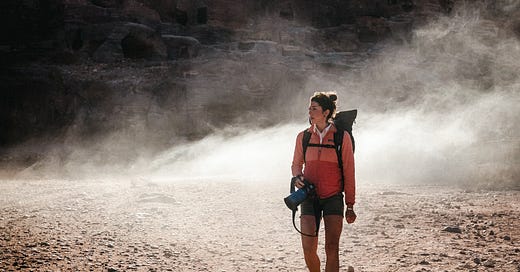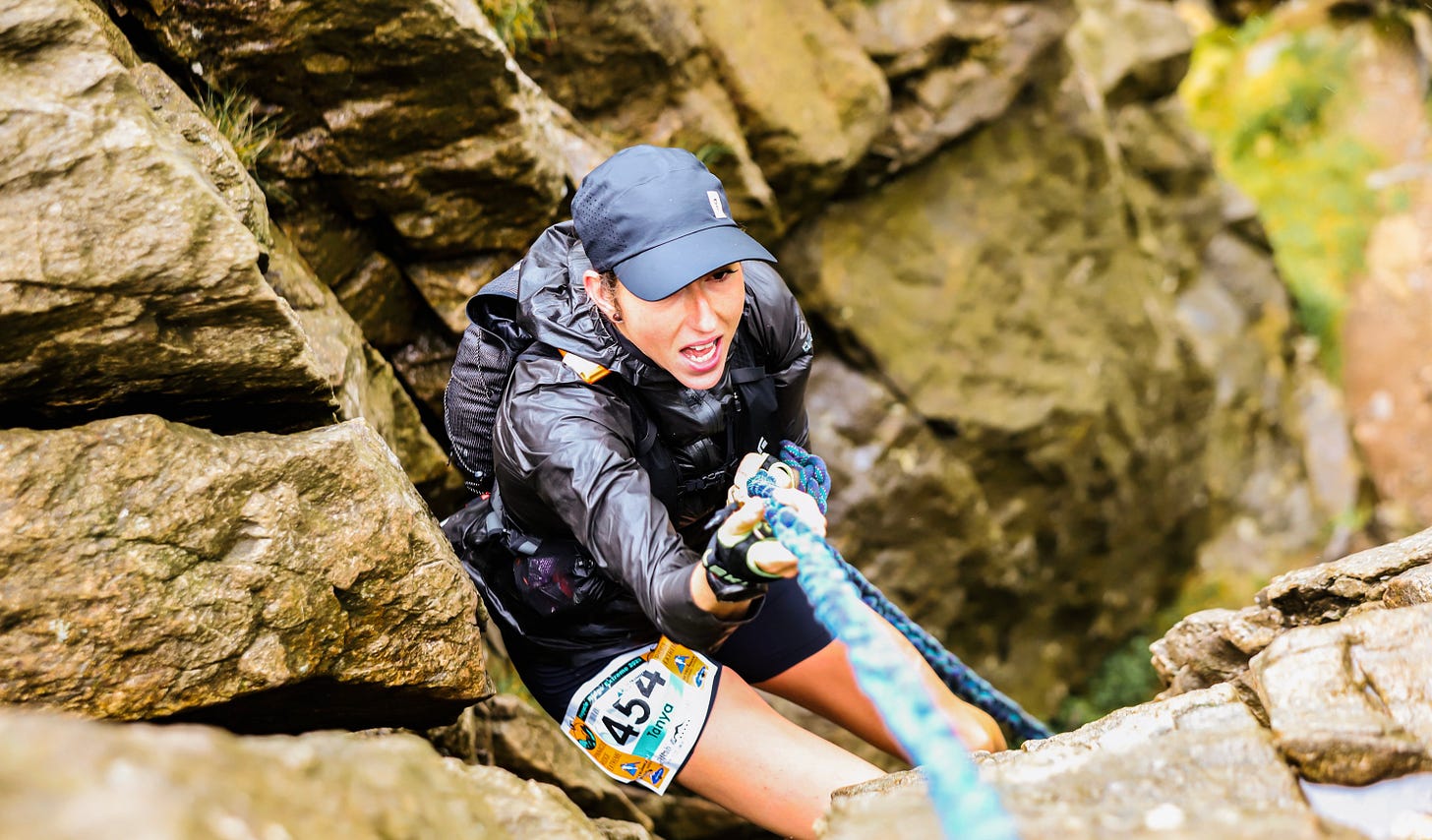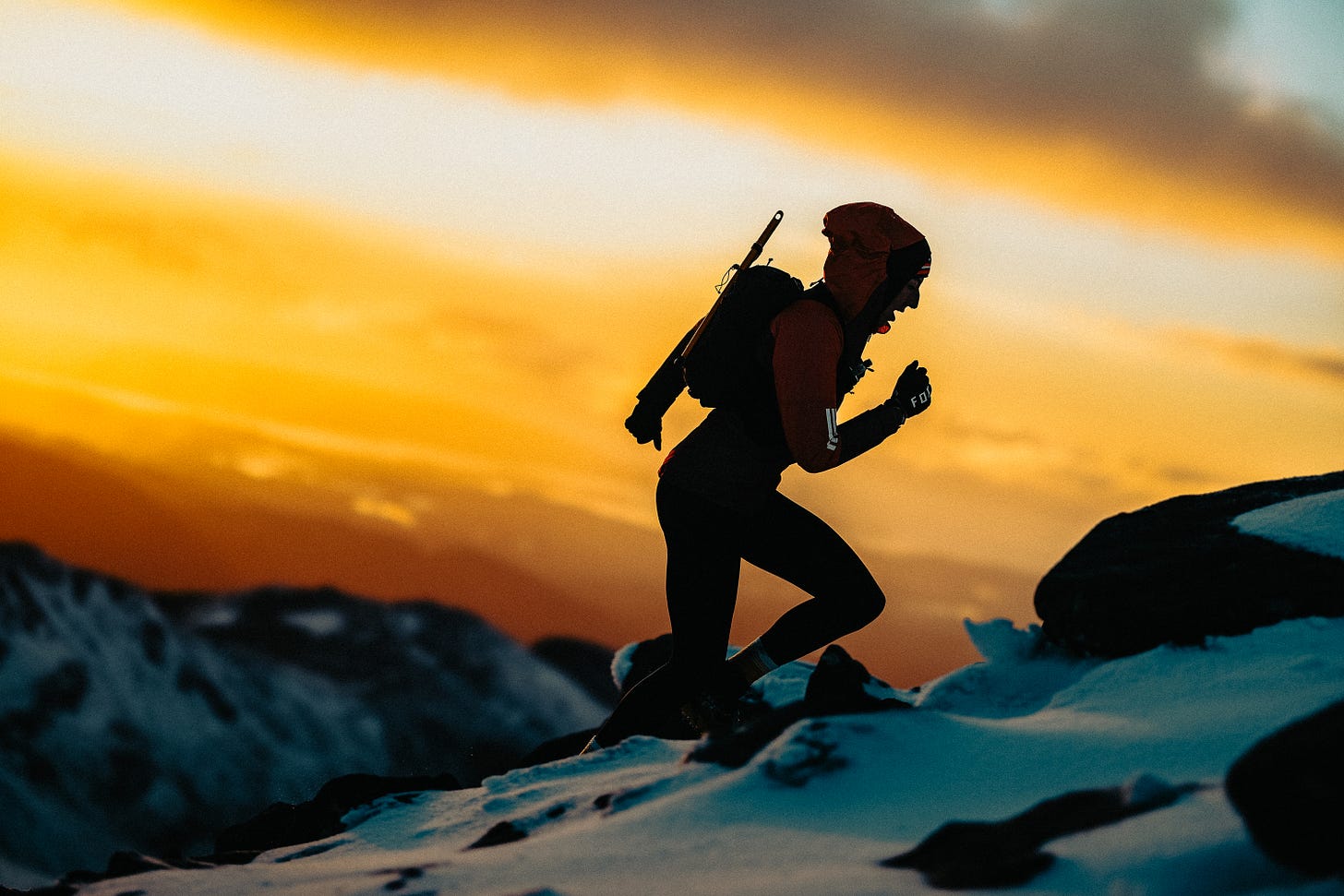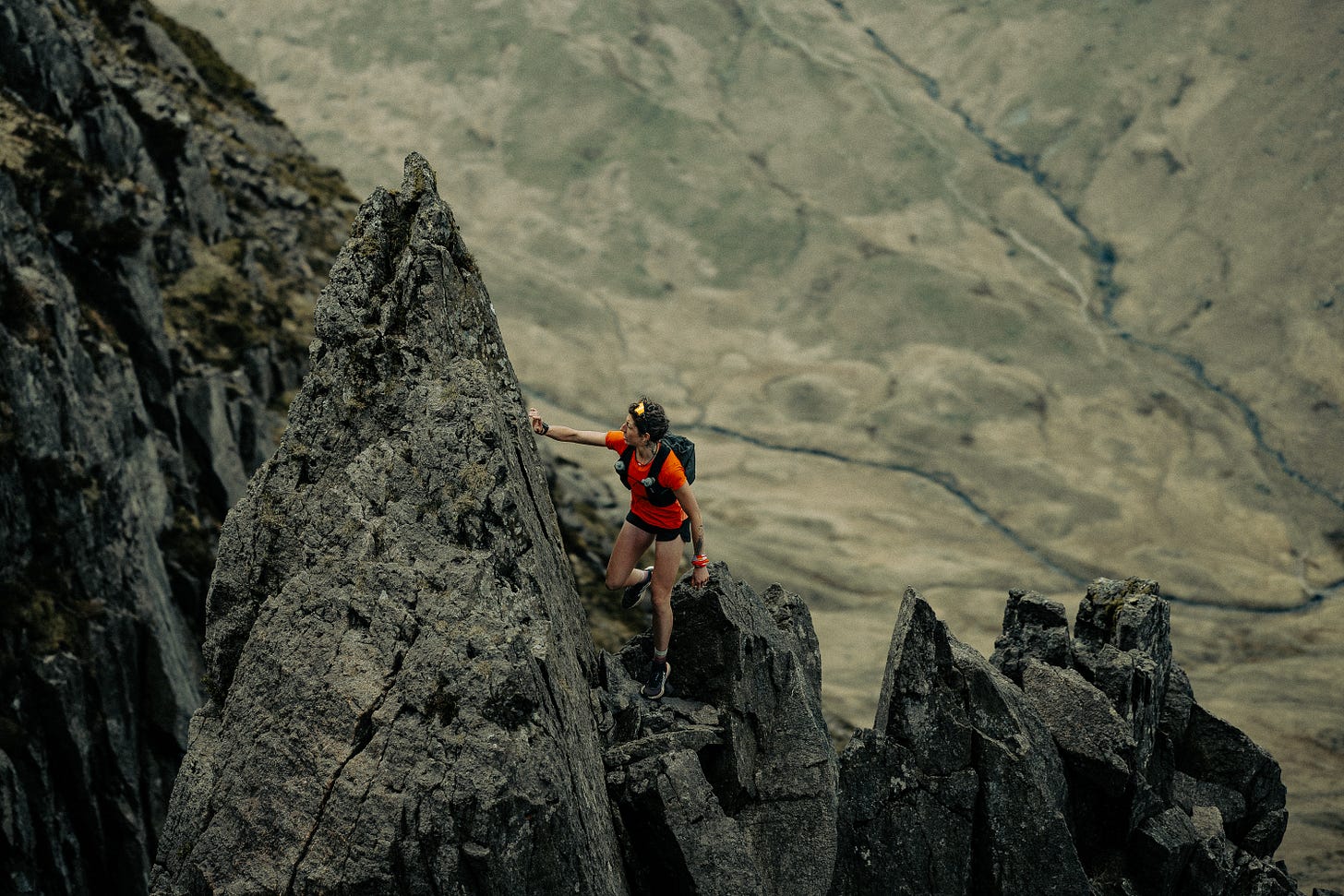Framed Outside: Meeting Tanya Raab
"My experience as an athlete shapes everything about how I capture others in the sport."
Excited to share the final portrait in this limited series, with Tanya Raab, celebrating women behind the lens in the outdoor and sports world.
Can you tell us more about you as a person and a photographer?
I’m a mountain sport photographer and skyrunner, drawn to wild, exposed terrain, the kind that tests your body and brings serious clarity to your mind. I mainly shoot running events in the mountains, often racing alongside the athletes to capture the effort, grit and beauty of these big days out. I’m highly ambitious and motivated and I’ve built a life around spending as much time as possible outdoors, whether that’s running ridgelines with a camera or planning my next mountain project. When I’m not in the hills, I work part-time at Riverside kitchen in Hathersage, a spot that keeps me grounded and feeds my love for good food and community.
First photo you were proud of?
I started shooting when I was 15, mostly drawn to people and everyday moments. I was really focused on documentary photography back then and worked at the local newspaper in Sweden as a photographer. I don’t remember one specific photo, but I do remember the buzz of getting my first image published in print. That moment made it feel real, like my work had a purpose beyond just the frame. It taught me early on how powerful photography can be when it’s grounded in truth and connection, something I’ve carried into my mountain work too, even if the setting has changed.
You’re also an athlete. Which passion came first and how did one influence the other?
Photography came first. I started out focused on photojournalism and some documentary work. I began running in the second year of uni while living in London and quickly fell in love with trail running (not what you’d expect from city life right?). Even quicker, I realised I loved shooting and documenting sports too. As I fell deeper into the outdoor life, it just clicked that I could combine my two absolute favourite things in the world, running and photography, and try to make that my mission in life, and hopefully turn it into paid work. A couple of years ago I moved from London to the Peak District to get closer to nature and fully immerse myself in the environment I wanted to live and work in. This September I’m planning to move again, this time to the Lake District, to be even closer to the mountains and keep pushing my boundaries.
How did the demand in photography evolved since you studied it ?
Since I studied photography the demand has changed a lot. There is much more content now and it moves very fast. Clients and audiences expect quick turnaround and lots of images for social media. Because of this, photographers are often asked to deliver more, faster. But despite this flood of photos people still want authenticity and real connection. My documentary background taught me to capture real moments and tell honest stories. This shapes how I shoot mountain running focusing on effort emotion and connection to the environment. Since I usually run with my camera and have raced myself I can share a first-hand experience of events. I try to capture what it feels like to push through tough terrain as well as the wider atmosphere of the race. This approach helps me create images that go beyond snapshots and truly reflect the experience.
How does your experience as an athlete shapes the way you capture others in the sport? Are there specific moments you look for than someone without your background could miss ?
My experience as an athlete shapes everything about how I capture others in the sport. Having been through the pain and the highs myself, I know when to expect the moments that really matter- the moments of pure effort, relief, focus, or even doubt. I often look for the small details that someone without that background might miss, like the way a runner’s face changes when they hit a tough patch, or how their body relaxes for a brief second when they find their rhythm. At the same time, I love capturing runners in the wider landscape. For me, it is just as much about the mountain environment as it is about the athlete. Some of the races I cover take place in truly stunning locations, and somehow it all has to be captured: the human effort and the scale of the surroundings. Being able to move through the terrain as part of the race helps me respond to both sides of that story, and see it from the inside rather than just from the sidelines.
Have you ever faced scepticism or barriers in the industry? How did you handle it ?
Yes, I have definitely faced scepticism and barriers, especially as a woman in a heavily male-dominated industry. That applies both to the event organisation side and the media and creative side. I’ve had to prove that I’m capable of being in the mountains and that I can deliver high-quality work to the same standard as my male colleagues, if not better. People have assumed I’m just there to take a few nice shots near the start line, not running the majority of the course with a camera in hand. I’ve handled it by consistently showing up, doing the work, and letting the results speak for themselves. Over time I’ve built trust with the right people and found clients who value authenticity, effort and creativity.
Can you tell us about a project, past or future that is special to you, and why ?
This is actually the first time I’m publicly talking about this, so it feels pretty exciting. I’m working on a stunning visual guidebook about skyrunning with John Proctor, a mountain guide and fellow skyrunner, called Beyond the Skyline. It explores the UK’s most challenging and exposed mountain ridges, combining striking photography, thoughtful reflections, and practical route information. The book captures not only the raw beauty of these landscapes but also the physical challenge and mental focus required to run them. As a woman both running and photographing these wild places, I hope it quietly inspires others to push their limits and discover the mountains for themselves. This book isn’t just a guide, it’s a call to get out there, push your limits, and experience the wild UK ridges like never before.
What advice would you give to women that wants to break into the industry but don’t necessarily have connections or a big budget for gear ?
Breaking into the photography industry without connections or a big budget can feel really tough, but it’s definitely possible. For me, it was about being resourceful and focused on what I could control. Start by shooting what you love, even if it’s just with basic gear. The story and passion behind your photos matter more than the latest camera. Build your skills by practicing consistently and finding opportunities to shoot locally or at events, even small ones. Networking doesn’t mean knowing big names right away; it’s about showing up, being reliable, and connecting with people in your community.
Most importantly, it’s important to be aware that this is a very long process. Things definitely don’t move at the speed we’d like. But at the end of the day, it’s about persistence and keeping showing up year after year, event after event. I’m still in that process myself and I’m still very much enjoying the journey. It’s a life I’m fully dedicated to.
The last photo that touched you ?
The last photo(s) that really touched me were from our first trip to the top of An Teallach back in January. It was one of the first times we were running those winter ridges with the camera for the book. The sunset light over the snow and rugged peaks created a series of moments that felt truly special. That location and those shots marked the very beginning of the project and everything I hoped the book would capture: the wildness, the beauty, and the challenge of those places. Looking back at those images keeps inspiring me as we continue working on the book.







